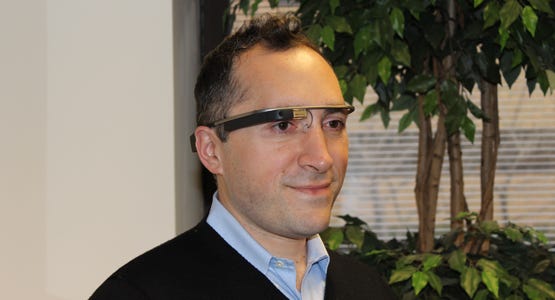Amazon VP on Wearables, DNA Sequencing, and Studying Cell Biology
January 20, 2015
Amazon's latest vice president Babak Parviz, PhD, is a symbol of the blurring lines between medical technology and consumer technology. The former director of the secretive Google[x] research facility, Parviz helped innovate both Google Glass and the company's glucose-sensing contact lens. He has also been involved in a medical diagnostics project that resulted in the founding of a firm called Claros Diagnostics Inc., played a role in developing an inexpensive method of detecting HIV, and has worked on DNA sequencing and a method for studying the function of individual cells. He hesitates to discuss his current projects at Amazon, but says the details of his work there will soon emerge.
Parviz, who is delivering a keynote address at at MD&M West, in Anaheim, CA on February 10, 2015, continues to be optimistic about the prospects of wearables, despite snarky articles from mainstream press outlets that suggest it is doomed to fail. "I don't expect a wearable device five years from now to be very similar to what we have today. It will be a sad outcome if it is very similar," he says. "But since the technology is going to change significantly in the coming years, I think it is very difficult to come up with an economic argument that this is going to take off or not."
|
Now at Amazon, Parviz is one of the innovators behind Google Glass as the Google smart contact lens. |
He says that smartphones themselves are wearables. "They sense and display information. That is a starting point," he says. Different form factors for wearables are coming, however, such as headset systems, and rings and bracelets that integrate to people's clothing. "In addition to different form factors, you will see lot more different functions integrate into wearables," Parviz says. "We'll see how they evolve. These are early days for wearable devices."
Parviz knows more than a thing or two about the difficulty of making predictions in the face of breakneck technological progress. The growth in the field of genomics is one especially clear example of a rapidly evolving field--and an area Parviz has been involved in. "Ten or 11 years ago, I was working on electronic DNA sequencing," Parviz recounts. "I have long been interested in looking at molecular recognition of binding events and see how those relate to electronic signals, bringing molecular events into the computing domain."
"The reason I want to mention that is that this was around the same time that DNA sequencing was going through a major revolution," he says. "At the time, the goal was to reduce the cost of DNA sequencing to $100,000 per genome. The first human genome had just been concluded at a cost of multiple billions of dollars."
Since then, there has been an exponential drop in the cost of sequencing. "It went from billions to tens of millions. And the goal at the time was to reduce to cost to $100,000 per genome," Parviz says. "I want to share this as a failure of something we did. This thing we pursued didn't succeed. But other methods that people did pursue after us and in parallel to us did succeed. And right now, we are close to a cost of $1000 per genome per human. We have made amazing progress."
Parviz has also developed technology to study cell biology. "I was attempting to do biology at a single cell level. My research group was making tools--sensors, microfluidic tools, robotic and metroscopy tools--to look at biology one cell at a time to figure out what really goes on in one cell," he recounts.
"To give you a sense of the importance of this, if you look at the conventional way of going about this, you either get a piece of tissue from someone or culture cells in a Petri dish and deal with thousands or millions of cells," he says. The resulting measurements from those cells are essentially an amalgamation of the goings on of thousands or millions of cells, masking many of the nuances of nuances of what goes on in cell biology.
In this video from 2013, Parviz discusses Google Glass and the advantages of a headset wearable device. |
"I can give you one example: we built a tool that takes a single cell and measures the oxygen consumption rate of that cell. And then we can do lots of these single cells," Parviz says. "What was really fascinating was, when we do a lot of these single cells, the average is actually very similar to the average number you get for the oxygen consumption; it is very similar to when you do the experiment with 100,000 cells. But when you look at the distribution, you see that you have a handful of cells that consume oxygen 100 times more than normal. And those are the cells that you would never see in bulk experiments."
In the future, as the fields of micro- and nanotechnology progress, scientists will be will be able to see what goes on in a single cell and connect that to computational tools to really understand what we are observing, Parviz says. "The sky's the limit."
In general, Parviz is optimistic about where technology will take him--whether he is working on studying individual cells or on secretive projects for Amazon or Google. "I have been excited about tech for a long time and I am still extremely excited. I have a lot to learn, so I am looking forward to see what happens in the coming years."
Hear from Amazon vice president Babak Parviz in a keynote at MD&M West, held February 10-12, 2015 in Anaheim, CA. |
Brian Buntz is the editor-in-chief of MPMN and Qmed. Follow him on Twitter at @brian_buntz.
About the Author(s)
You May Also Like



